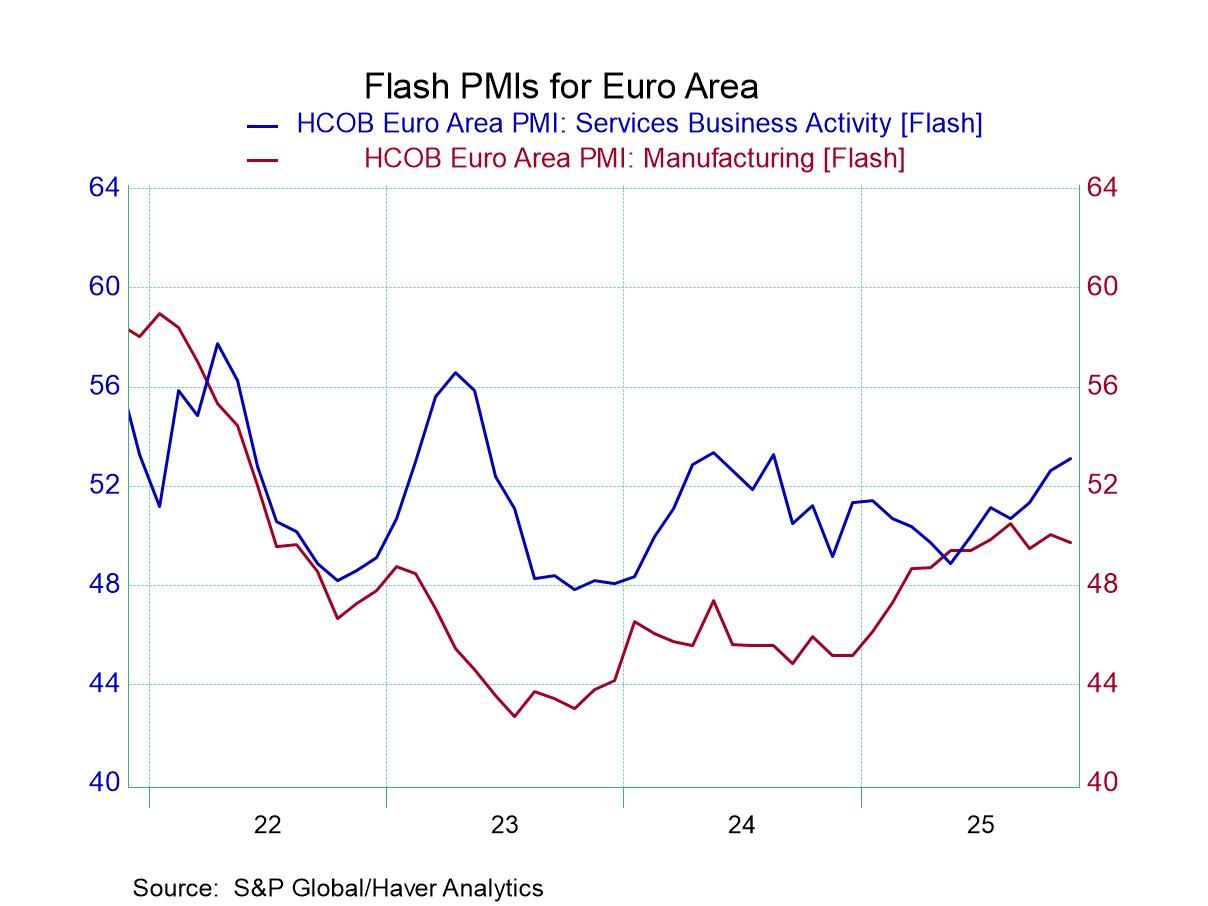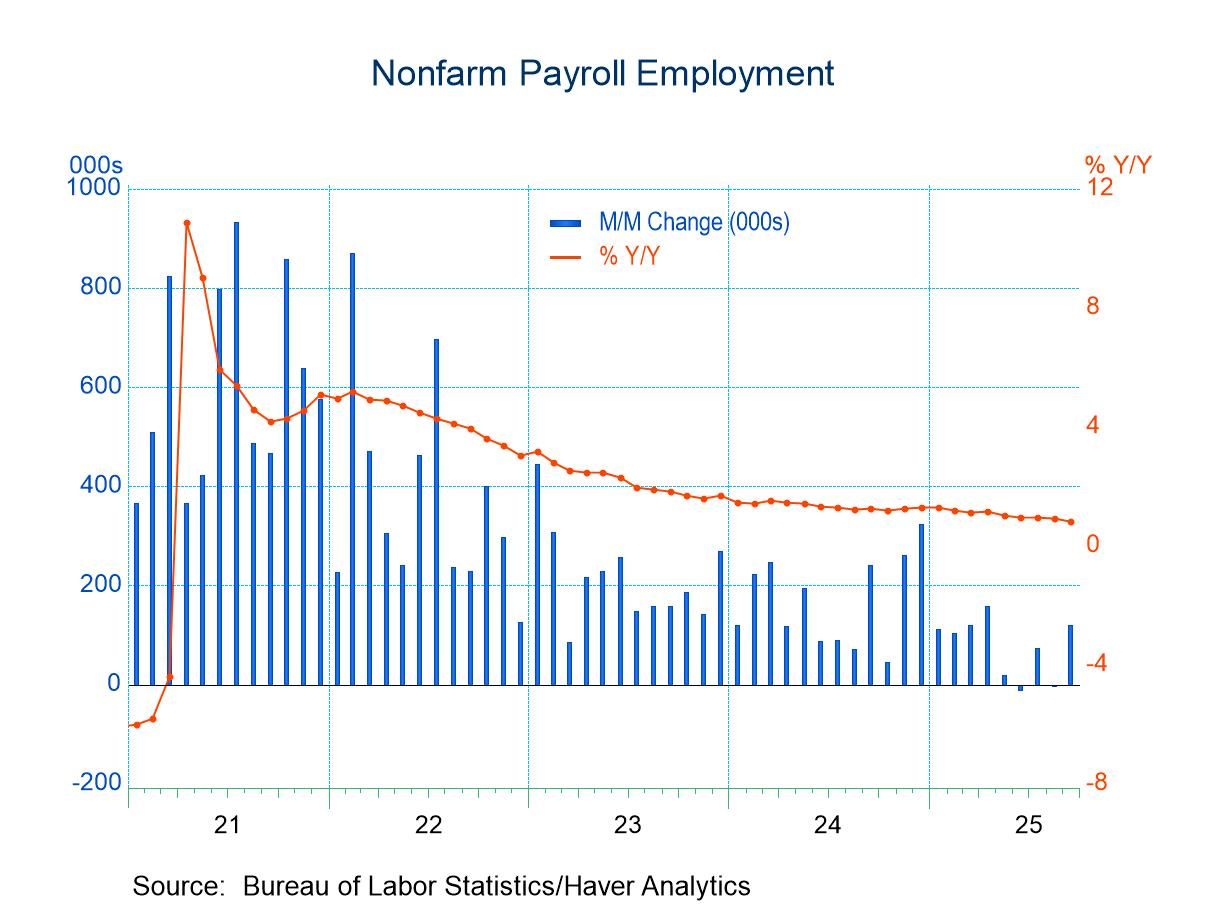U.S. Industrial Production Rebounded in May
Summary
- IP growth rebounded 0.9% m/m in May as did manufacturing output.
- Within manufacturing, both durable and nondurable goods production rose last month.
- Mining activity rose.
- Capacity utilization rose to 78.7%.


Total industrial production rose 0.9% m/m in May (0.4%y/y) following no monthly change (-0.4% y/y) in April. The Action Economics Forecast Survey expected a 0.4% m/m increase in production last month. Manufacturing production also rose 0.9% m/m (0.1% y/y) in May, following a monthly decline of 0.4% (-0.5% y/y) in April. April IP was revised from an initially reported decline of 0.3% m/m.
Mining activity rose 0.3% m/m (-0.4% y/y) in May, following two consecutive monthly declines. April mining activity declined 0.7% m/m (-1.3% y/y), revised from -0.6% m/m. Utilities output rose 1.6% m/m (3.9% y/y) last month, following a 4.1% (2.3% y/y) rise in April, revised up from a monthly gain of 2.8%.
Amid the monthly volatility, manufacturing output has been relatively flat over the past 17 months. In fact, the index level in May was 99.8, exactly the same as in May 2023. The manufacturing sector has been one of the most adversely affected by the Fed’s interest rate hikes. Since April 2022 (just after the Fed initiated its rate hikes in March 2022), manufacturing output has fallen 1.0%.
Within the manufacturing sector in May, durable goods production rose 0.6% m/m, following a decline of 0.4% m/m in April (revised from -0.5% m/m). Motor vehicle production rose 0.6% m/m, while production of electrical equipment and appliances rose 0.1%. Production of nondurable goods rebounded 1.1% m/m in May, following a downwardly revised drop of 0.4% m/m from -0.1% m/m in April.
Production of selected high-technology industries rose 0.2% m/m in May following a 0.9% m/m rise in April, originally reported as up 1.0% m/m. Energy production rose 1.2% m/m last month, following a 0.7% m/m rise in April. Manufacturing output excluding motor vehicles rebounded 0.9% m/m, following a slight decline of 0.3% m/m in April. Manufacturing output excluding selected high-tech industries also rose 0.9% m/m in May after a decline of 0.4% m/m in April.
Production of construction supplies was unchanged last month, after a 1.2% m/m fall in April. Materials output rose 1.0% m/m after a 0.2% m/m decline in April.
Total capacity utilization rose to 78.7% in May, up from 78.2% in April, revised down from 78.4%. The Action Economics Forecast Survey had forecasted 78.4%. The capacity utilization rate for manufacturing rebounded to 77.1% in May from 76.6% in April, revised down from 76.9%. The capacity rate for utilities rose to 71.5% last month from 70.6% in April.
Industrial production and capacity data are in Haver’s USECON database. Additional detail on production and capacity utilization can be found in the IP database. The expectations figures come from the AS1REPNA database.


Kathleen Stephansen, CBE
AuthorMore in Author Profile »Kathleen Stephansen is a Senior Economist for Haver Analytics and an Independent Trustee for the EQAT/VIP/1290 Trust Funds, encompassing the US mutual funds sponsored by the Equitable Life Insurance Company. She is a former Chief Economist of Huawei Technologies USA, Senior Economic Advisor to the Boston Consulting Group, Chief Economist of the American International Group (AIG) and AIG Asset Management’s Senior Strategist and Global Head of Sovereign Research. Prior to joining AIG in 2010, Kathleen held various positions as Chief Economist or Head of Global Research at Aladdin Capital Holdings, Credit Suisse and Donaldson, Lufkin and Jenrette Securities Corporation.
Kathleen serves on the boards of the Global Interdependence Center (GIC), as Vice-Chair of the GIC College of Central Bankers, is the Treasurer for Economists for Peace and Security (EPS) and is a former board member of the National Association of Business Economics (NABE). She is a member of Chatham House and the Economic Club of New York. She holds an undergraduate degree in economics from the Universite Catholique de Louvain and graduate degrees in economics from the University of New Hampshire (MA) and the London School of Economics (PhD abd).





 Global
Global
